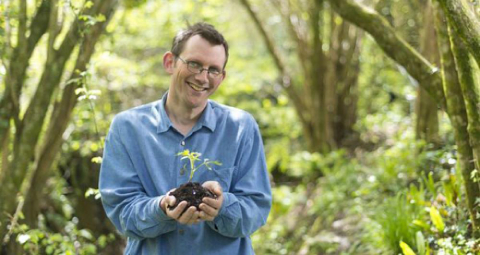BY Ian Dunn | November 15 | ![]() 0 COMMENTS
0 COMMENTS ![]() print
print

Thinking over, above, below and outside the box
Every year social scientists in the United States run a series of tests on random subjects. In the simplest one, the subjects are given a small box, the size of an ash tray, and asked to come up with as many uses for it as they can in two minutes. “A hat!” “A badge storer!” “A wonky table wedge!” And so on.
It’s part of what’s called the Torrance Tests of Creativity. And over the past 35 years the responses are getting worse and worse. Across Europe and America the findings concur: our imaginations are wilting, we are losing the ability to think of the unexpected, the surprising, to go over, below, above and outside the box.
Creativity crisis
This trend from time to time will spark worried editorials in the likes of the Wall Street Journal bemoaning the ‘Creativity Crisis’ and it’s detrimental effect on the world economy.
The environmentalist, Rob Hopkins, in his book What Is to What If: Unleashing the Power of Imagination to Create the Future We Want suggests this trend is driving the planet to disaster as we fail to imagine plausible futures for a world consumed by climate change. He urges people to embrace ideas like car-free cities and bus stop gardens.
The reasons behind this remain opaque. Certainly the deluge of information we have received since the mid-1990s culminating in the smart phone vomiting endless data into our hands must be a factor. Why day-dream or ponder when there’s always something, be it TV, Facebook or podcast to distract you?
Increasing stress
We also know that the hippocampus, the area of the brain largely responsible for imagination, shrinks when we are stressed and produce excess cortisol. The increasing rates of stress and anxiety are likely a factor too.
Very unscientifically, it feels like it’s something to do with where we are. The United Kingdom doesn’t feel like an imaginative place. It feels like an ageing country jam-packed with regulations and jobsworths, where thinking of a better future is more trouble than it’s worth.
All very depressing, but what has it got to do with Catholicism, I hear you ask. Simply this: that period since the mid-1990s that has seen creativity collapse has also seen the rapid decline of Christian practice.
The future we need
What if part of that is down to that same failure of imagination? That people who cannot imagine a better future or brighter option cannot conceive of the possibility of an infinite God who loves them?
Which to be fair, is a huge idea. A vast one. As big as it gets. And if we are not a species striding confidently forward into a bright tomorrow, but instead millions of increasingly lonely, fearful and technology-addled individuals, is it any wonder that so many of us cannot handle it?
There is a popular idea that things are getting better, that the arc of history is long but it bends towards freedom. It increasingly looks quite foolish. We may invent more gizmos, find new ways to build things and some of us may get richer but we don’t get better or happier. We don’t become more moral. Wealth doesn’t better us. As the failure of imagination suggests, it may even stunt us.
Future
The question for the Church is how we resist the clarion call of the present and its shortcomings, and make the true leaps of conception required to see the future we need, not the one we fear.
Society as it is, currently structured across Europe and America, with capital and the individual placed first, may be fundamentally hostile to the Church.
Perhaps the Church will only flourish here again if it helps imagine a different sort of society, one more based on family, love and imagination.










